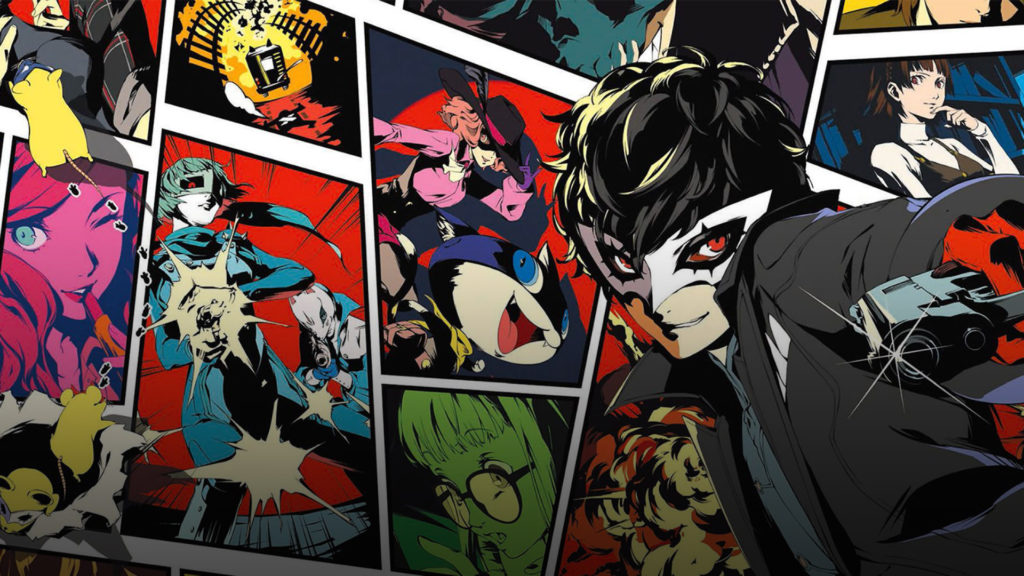Shin Megami Tensei’s Persona Celebrates 25 Years
Tarot cards, the power of friendships, and religion, mythology, and literature influences: What do all these things have in common?
They are all concepts featured in Persona, a Japanese role playing (JRPG) video game series developed and published by Atlus.
It was released in 1996, starting with Revelations: Persona, and continuing with its most recent installment, Persona 5 Royal in 2019. It’s a spin-off based on the video game series Shin Megami Tensei.
In light of it’s 25th anniversary, here is the history behind the series.
The game that inspired it all was Shin Megami Tensei If…, it was released for the Super Famicom (known as the Super Nintendo Entertainment System (SNES) in the U.S.) in 1994.
The first installment—Revelations: Persona— was released in 1996 for Playstation. The game focuses on a group of high school students who are confronted by supernatural incidents. They gain their ability to summon their personas during a game of fortune telling. All granted by Philemon, a deity who lives in the unconscious and consciousness of all souls.
Persona 2: Innocent Sin and Persona 2: Eternal Punishment was released in 1999 and 2000, respectively, for Playstation. Innocent Sin follows the story of a group of high school students who confront Joker, the villain in the game, who is using rumors to turn the city into a warped reality. Eternal Punishment takes place months after the events of Innocent Sin, featuring Maya Amano, a journalist who is investigating Joker’s curse.
In 2006, Persona 3 was released in Japan and the following year in North America on Playstation 2. The story follows a male high school student, who alongside the Specialized Extracurricular Execution Squad (S.E.E.S) is investigating the dark hour, a time period in between days. During the dark hour, the S.E.E.S enters Tartarus, a 264 floor tower filled with shadows, the enemies of the game. The game laid the foundation for modern Persona games. In 2007, Persona 3 FES was released. It’s a director’s cut that includes an epilogue. In 2009, Persona 3 PSP was released, including new music and the ability to play as a female protagonist.
Considered one of the best games of all time, Persona 4 was released in 2008 for Playstation 2. The story explores the protagonist living in the fictional town of Inaba, who alongside his high school friends—the Investigation Team—uncovers the truth behind a series of mysterious murders. The group travels through the TV World, a realm inside a television that contains various dungeons, fighting various shadows. In 2012, Persona 4 Golden was released for the Playstation Vita. It expands the story, adding new characters to befriend as well as a new dungeon to explore.
The latest installment of the series, Persona 5, was released for Playstation 3 and 4 in 2016. It takes place in Tokyo and features the protagonist known by the alias Joker, who forms a group called the Phantom Thieves of Hearts. They explore the Metaverse—a realm made from the subconscious desires of humans—to steal the evil from the hearts of adults. In 2019, Persona 5 Royal was released, adding an extra palace, a third semester, and new characters and confidant links
All the games feature nearly the same type of gameplay: dungeon crawling and turn based combat. The first two games include a negotiation system, using tactics such as persuading, taunting, or bragging to obtain items or special cards used to create Personas.
Starting with Persona 3, social links (3 and 4) and confidants (in 5) were included, mixing in simulation aspects in a roleplaying game. Each social link or confidant can be ranked up, as well as any persona that is created, is tied to the Major Arcana of the Tarot. The higher you rank up, the more powerful the personas you create become.
Personas—known as the manifestation of one’s true self, a concept inspired by Jungian psychology—is featured in all the games. They are used to fight alongside the characters. The games also feature the Velvet Room. It’s described as “a place that exists between dream and reality, mind and matter,” it is a room hosted by a man named Igor, who lets you create personas of the same or lower level as the player. Starting with Persona 3, the protagonist is considered the wild card, who has the ability to carry multiple Personas on him. In the first two games, every character is able to carry multiple personas. The personas are inspired by religious, mythological, or literature characters.
The Persona series revitalized the JRPG genre, including new gameplay tactics that made the games more enjoyable and practical, as well as adding social aspects to make the player feel closer to the characters.
The themes explored in the game—such as death and friendships—helps players discover their true selves, much like the characters did. As video games advanced, so did Persona, going from a Shin Megami Tensei-esque game, to a one of a kind experience.




